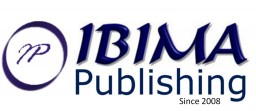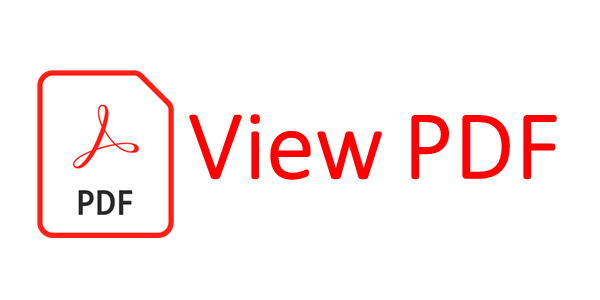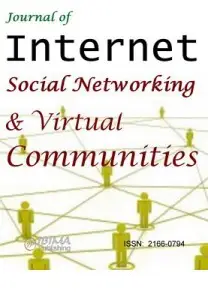Introduction
The post Covid years have brought about an unexpected development of on-line shops and, more generally, sales. Cybersquatting has also followed the same trend, especially in the recent years. Recent reports indicate a notable increase
in cybersquatting cases, underscoring an urgent need for enhanced solutions. According to Dotkeeper, the World Intellectual Property Organization (WIPO) recorded a 7% rise in domain name dispute cases in 2023, marking the highest-ever number of filings. This surge, with nearly 6,200 complaints filed, reflects a significant 68% increase since the COVID-19 pandemic began, highlighting the importance of resolving online infringement to protect intellectual property (Dotkeeper, 2023). Additionally, GigaLaw noted an 18% rise in disputes filed under the Uniform Domain Name Dispute Resolution Policy (UDRP) during the third quarter of 2023, emphasizing the pervasive threat cybersquatting poses to brand integrity and the essential role of structured dispute mechanisms (GigaLaw, 2023).
The UDRP procedure has never provided any real criteria for assessing whether users are acting in bad faith. That is why this research analysed and described the way in which bad faith could be deduced from certain criteria, to finally present a model that could be used during UDRP arbitration procedures in order to understand whether bad-faith can be traced and successfully challenged.
Understanding what this bad faith, or sometimes abusive registration, represented was the starting point for this research. It raised the question of how the arbitrators’ decisions related to the dishonest practice of abusive marketing, when the rules themselves were neither clear nor exhaustive. Could there be a certain regularity of analysis and constants that would lead to a unitary assessment that could be conceptualised in a model? It is to answer this question that the present research has been developed in the following lines.
Literature Review
Recent research underscores that the rise in domain name disputes, coupled with the lack of standardized guidelines for assessing “bad faith,” results in significant inconsistency in arbitration decisions (Bettinger, 2015; Farley, 2019). Experts have long pointed out the absence of a uniform approach to evaluating “bad faith,” observing that decisions often hinge on a mixture of prior rulings, personal discretion, and subjective judgment (Bettinger, 2015).
Legal scholars argue that the absence of clear criteria tends to favor trademark holders, especially those with substantial financial backing, enabling them to invoke broad interpretations of “bad faith” to challenge smaller domain name holders (Farley, 2019; Karanicolas, 2020). This raises concerns that the process for selecting UDRP panelists and the flexibility in procedures may unintentionally disadvantage legitimate domain name owners. To address these issues, reforms are needed, such as the introduction of more precise criteria for determining “bad faith,” enhanced oversight of procedures, and greater transparency in panelist appointments (Chaisse & Friedmann, 2024; Cogburn et al., 2023). Without these changes, the UDRP could evolve into a tool that disproportionately benefits trademark owners at the expense of independent domain registrants, straying from its intended role as a neutral dispute resolution forum.
Recent decisions exemplify how UDRP panels have effectively taken on a legislative role, interpreting “bad faith” in ways that stretch beyond the original policy scope. In the case of L’Oréal v. Domain Park Limited (WIPO Case No. D2008-0072), the panel concluded that the domain name magnifique.com was registered and used in “bad faith” due to its close resemblance to L’Oréal’s “MAGNIFIQUE” trademark, despite the term’s potential generic nature. Similarly, in Pestalozzi Attorneys-at-Law Ltd v. Name Redacted (WIPO Case No. D2019-1345), the panel found that the inclusion of “mod” in modwalkamerica.org contributed to consumer confusion, reinforcing the fluid interpretation of “bad faith.”
As online commerce continues to grow, refining the UDRP’s approach to “bad faith” is essential for ensuring fair and balanced online dispute resolution. Addressing current inconsistencies, incorporating lessons from pivotal cases, and establishing clearer procedural guidelines will help strike a balance between protecting trademarks and safeguarding the rights of legitimate domain name owners.
Methodology
This research utilized case analysis to explore how UDRP panelists interpret and apply the concept of “bad faith” in domain name disputes. By examining the language and reasoning in UDRP rulings, case analysis uncovers the subtle decision-making processes and interpretive trends that influence outcomes (Escudero, 2011). Case selection plays a vital role in building theoretical frameworks from case studies, as qualitative research emphasizes examining patterns across multiple cases to generate insights (Yin, 2018). A limitation of this study is its focus on depth, which may limit the generalizability of the findings, as qualitative studies tend to prioritize detailed understanding over broad applicability (Creswell, 2009).
The study involved a structured review of 200 cases, arranged chronologically, starting from the earliest decisions by WIPO. The primary criterion for case inclusion was the presence of the keyword “bad faith.” Each case was categorized according to key themes in the panelists’ reasoning, such as lack of genuine confusion, use of abbreviated trademarks, or deceptive similarity.
To maintain a focused analysis, the study minimized the number of thematic tags, concentrating on cases that either provided clear legal reasoning or introduced innovative interpretations. Cases were also selected based on their significance, such as those involving high-profile brands (like the Tesla case), clear legal reasoning, or those that shaped future rulings. Special emphasis was placed on cases frequently cited by panelists in subsequent decisions, as these cases played a key role in solidifying emerging interpretative trends.
The coding process grouped cases based on how panelists assessed “bad faith,” either through direct factual analysis or by inference from consumer confusion. The data was then organized into one of five categories within the five-zone model for fraudulent use analysis (see Fig. 1), ensuring a systematic approach to categorizing the findings. This classification process allowed the identification of recurring judicial patterns, shedding light on trends in subjective decision-making and panel reasoning. By organizing the data in this manner, the study contributes to the predictability of UDRP decisions, offering a framework for understanding how panelists apply “bad faith” criteria, which is further illustrated in the decision-making model for fraudulent use (Fig. 2). As a result, this research introduces two models aimed at promoting consistency in domain name dispute resolution: the five-zone model for fraudulent use analysis, which classifies cases based on similarity, legitimate rights, and “bad faith,” and the decision-making model for fraudulent use, which provides a structured method for evaluating domain name misuse.
Results
Identical or similar domain name
The first substantive element that must be proven by the complainant arises from paragraph 4.a.i) of the UDRP, which provides in particular for the need to find a domain name that is identical or confusingly similar to the complainant’s trademark . [i]
The cases selected were classified on the basis of the degree of proximity between the domain name and the trademark, as identified by the panel. The choice between the two extremes was organised into four categories: (1) no real confusion; (2) abbreviated trademark; (3) trademark followed by a generic term; (4) brand and trademark.
In what concerns the absence of real confusion, the first case selected here analysed the question of whether mocosoft.com and microsoft.com were confusing. The panelist used several levels of analysis. Firstly, he put himself in the shoes of the average Internet user and asked whether the term “moco-” could be understood as an intention to parody the brand. To answer this question, he approaches it from a conceptual angle, and then takes a phonetic approach, comparing the difference between ‘i-o’ and ‘o-o’. In both cases, he concludes that there is a lack of ‘confusing similarity’. [ii]
In another case, the panel concluded that the domain name “magnifique.com” was not confusingly similar to the trade marks MAG or MAGNASWEET. In particular, the panel considered that the particle “mag” in the domain name could not be confused by regular Internet users with the chemical substance Mono-Ammonium Glcyrrhizinate.76
Concerning the abbreviated mark, another type of problem is the addition of an acronym to the domain name. This is the case with the domain name modwalkamerica.org. The panel found that the domain name was confusingly similar to the trademark:
“…it fully incorporates the WALKAMERICA trademark, with the minor addition of the March of Dimes acronym, ‘MOD’. […] Second, Internet users who search for March of Dimes on the Internet using the domain name in question are likely to be mistakenly redirected to the Respondent, increasing the likelihood of confusion”. [iii]
As for the brand followed by a generic term, it is interesting to note first of all the justification given by a panel, in a more recent case, for the lack of importance of the “http://www” portion or the “.com” portion. The panelist cited a decision of an arbitration body, the NAF, which in turn cited the Manual of Examination Procedures drawn up by the United States Patent and Trademark Office (USPTO):
“It is well established that the top-level domain name (i.e. ‘.com’) should be disregarded. […]; See also the United States Patent and Trademark Office’s Trademark Manual of Examination Procedures (3d ed.) § 1215.02 (“Neither the beginning of the URL (‘http://www.’) nor the TLD has any significance as an indication of source. “).” [iv]
Concerning brand and trademark, in one relevant case, the Panel considers the fact that the Respondent has composed a domain name with the Complainant’s trademark, CIALIS, and two other trademarks, APCALIS and VIAGRA, belonging to third parties. What is of interest to the panel here is the fact that the combination of the two marks does not erase the confusing similarity.
Thus: “The Panel finds that the Respondent’s domain names are confusingly similar to the trademark CIALIS in which the Complainant has rights, even though the domain name also contains the trademarks APCALIS and VIAGRA, which are owned by third parties.” [v]
Legitimate Rights or Interests
The second substantive element, when analysing a case, arises from paragraph 4.a.ii) of the UDRP, which provides, in the relevant part, for the absence of a right in the domain name or a legitimate interest.
In general, the panels have adopted the rule that the claimant has the burden of proof in relation to paragraph 4.a.ii), but once the claimant has established a prima facie case that the respondent has no legitimate right or interest, the burden of proof lies with the respondent.
It has been established that the mere fact of registering a domain name cannot establish a right or interest in that same domain name.[vi] The panels also agree that the use of a domain name to direct users to other unrelated sites does not constitute a legitimate interest. [vii]
Registration and use in bad faith
The third substantive element, and the most difficult to argue when analysing a case, results from paragraph 4.a.iii) of the UDRP principles, which provides the need to demonstrate the existence of bad-faith at registration and during use.
It is very important to note that paragraph 4.b. of the UDRP mentions a non-exhaustive, unlimited list of circumstances that point to the registration and use of a domain name in bad faith. The panels are clear on the fact that the normative provisions concerning bad faith are provided for by way of example only:
“[…] the examples of registration and use in bad faith set out in paragraph 4.b. are not intended to cover exhaustively all the circumstances in which such bad faith may be found, and for this reason the panelists should adopt a strict analysis of the circumstances of the behaviour of the registrant of the domain name.” [viii]
In its relevant part, paragraph 4.b. provides that there is bad-faith in case of an offer to sell at a price higher than registration costs. An interesting problem arises when the trademark holder begins negotiations to purchase the corresponding domain name. In such a situation, the panel considered:
“[…] it is logical for trademark holders to make offers to purchase domain names and it is equally logical for such conduct to lead to offers to sell by the domain name holder at prices that exceed the cost of registration. Such offers by the domain name holder would not in themselves constitute evidence of registration in bad faith and should not be considered as falling within the circumstances described in paragraph 4.b.i) of the procedure.[ix]
In its relevant part, paragraph 4.b. provides the need to prove an attempt to prevent the tardemark owner to use his mark within a domain name. Panels take into account whether a defendant has already been involved in other similar cases under the UDRP procedure and has been found to be acting in bad faith:
“We recognize that […] prior decisions involving the same names may not be relevant due to factual differences. Nevertheless, it is significant to note that the Respondent has been involved in at least two other ICANN UDRP decisions concerning the use of another’s mark as a domain name to sell tickets online […]. In each case a decision was rendered finding that the respondent’s conduct, similar to that at issue here, was not fair and constituted a violation of the UDRP.” [x]
In another type of analysis, in a recent case, the panel considered a long list of behaviours which, taken as a whole, presented a sufficiently convincing indication of the existence of bad faith. The panelist concluded that:
“While none of these factors taken alone is necessarily sufficient to find bad faith, the cumulative existence of these factors convinces the panel that the domain name was registered and is being used in bad faith.” [xi]
In its relevant part, paragraph 4.b. provides: “(iii) you registered the domain name primarily with a view to disrupting the commercial operations of a competitor. […] “.
The term “competitor” as set out in paragraph 4.b.iii) has been interpreted differently by the panels. In one case, the panel considered that:
“…] the term ‘competitor’ should not be understood solely as a commercial or business competitor, but should rather refer to a person who acts to the detriment of another.”[xii]
In another case, the panel again adopted a broad interpretation, considering that the type of competition in question did not have to be commercial, and that the defendant’s opposition to the practices of a broker of which it had previously been a client and which it was now criticising was sufficient to qualify it as a ‘competitor’.[xiii]
Increasingly, the text of the awards contains an analysis that invokes a combination of the tests set out in paragraphs 4.a.i) and 4.a.iii) of the procedure. At first sight, the panels use this type of analysis as a technique for reaching a conclusion more quickly.
The fact that the defendant chose to combine for its domain names <michelin-restaurant-recipes.com>, <michelin-recipes.com>, <le-guide-rougerecipes.com> and <redbook-recipes.com>, generic terms such as restaurant and recipes[xiv] , combined with the MICHELIN and LE GUIDE ROUGE trademarks, are “not only an inference of bad faith, but also a combination that can hardly be considered sufficient to distinguish the domain name from the Complainant’s trademark.” [xv]
Discussion
Specific situations by zone
In order to present all of the results in a comprehensive manner, the following graph has been used to explain the situations that could arise in front of a panel, broken down by substantive elements. This division does not exclude other variants, but merely represents a proposed classification for conceptualising the results obtained in the course of this research.
Each case to be presented to a panel, which must issue a decision under the UDRP procedure, can be framed in one or more of the zones on the chart, noted from 1 to 5 (Fig. 1).
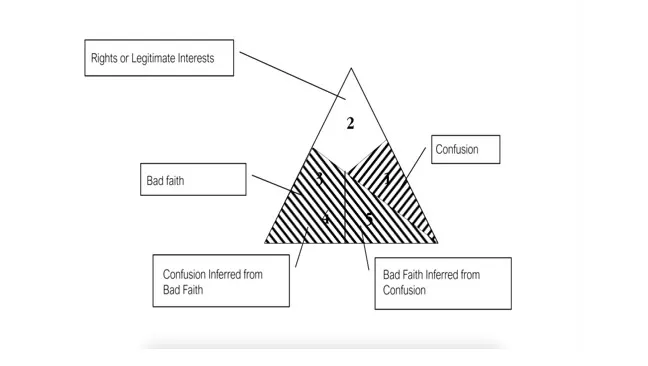
Fig 1. The five zones defining fraudulent use analysis
Source: Authors’ own research.
The scope of the zones is described in the five paragraphs below, together with their interrelations. Zone 1 groups together all the
cases where the panel considered that the conditions laid down in the first element of the procedure (confusing similarity) had been met, while zone 2 covers all the cases where the panel considered that the conditions set out in the second element of the procedure (legitimate rights or interests) had been met. Zone 3 contains all the cases where the panel considered that the conditions set out in the third element of the procedure (bad faith) had been met.
More complex, zone 4 groups together all the cases in which the panel considered that the conditions laid down in the third element of the procedure were met and from which it deduced that the same case also met the conditions laid down in the first element of the procedure (for example, on the basis of bad faith, it deduced the existence of confusing similarities). Finally, zone 5 groups together all the cases in which the panel considered that the conditions laid down in the first element of the procedure were met and from which it deduced that the same case also met the conditions laid down in the third element of the procedure (for example, on the basis of confusing similarity, it deduced the existence of bad faith).
Conditions for belonging to one of the five zones
For a case to fall into zone 1, according to the provisions of the first substantive element, all that is required is an objective element independent of the defendant’s intention – the similarity between the domain name and the trademark. However, the panel decides on the basis of an objective element – the reputation of the trademark – and a subjective element – user confusion.
For a case to fall into Zone 2, according to the provisions of the second substantive element, there must be minimal proof of an objective element – for example, a generally known name – and/or a subjective element – for example, good faith, depending on the criterion the defendant chooses for his defence. The defendant chooses a written test or another defence test, which makes the scope of zone 2 virtually unlimited. As we shall see below, there is only one limitation, since the panel almost always excludes a case from zone 2 as soon as it finds that the same case could fall within one of the other four zones.
For a case to fall into zone 3, according to the provisions of the third substantive element, all that is required is a subjective element (since even inaction can be a sign of bad faith). Here again, the scope is infinite, since any indication can be a sign of bad faith, even a case in zone 2.
A case is found in zone 4 if the panel considers that it is part of zone 3, and therefore deduces that it is also part of zone 1. It is not significant whether or not it uses the same circumstances as arguments for this purpose. Here we find the elements contained in each of zones 1 and 3.
A case is in zone 5 if the panel considers that it is part of zone 1, and therefore deduces that it is also part of zone 3. It is not significant whether or not it uses the same circumstances as arguments for this purpose. Here we find the elements contained in each of zones 1 and 3.
Conditions for a successful claim
The claimant will be successful if he can demonstrate any of the following combinations: the case falls within zones 1 and 3, cumulatively; the case is part of zone 4 only; or the case is part of zone 5 only.
With regard to the first element, the panelists try to define several variables that help them in their analysis: the Internet user, the distinctive element in the domain name and the brand awareness. They also try to establish several standards so that they can compare the domain name with the brand.
For the first variable, a distinction is made between the average user and the professional user, depending on the user of the brand’s products and services. For the second variable, we look for an element in the domain name that reveals the distinction or similarity with the trademark; these are mainly the eleven categories whose results I presented when analysing the first element of the procedure (for example, an abbreviated trademark, a phonetic similarity, etc.). For the third variable, we generally take into account brand awareness for the average user.
It is the trademark’s need for protection that will prompt the panel to consider the similarity to be significant. It is on the basis of this analysis that the panel will extend or restrict the scope of cases in zone 1. The more protection the trade mark needs, the more the similarity will be considered to fall within the scope of paragraph 4.a.i).
First of all, the panel classifies the type of similarity (translation, spelling similarity, etc.). Next, it applies a first test: the better known the trademark, the stricter the scrutiny of the elements that make up the domain name and the greater the protection afforded to the trademark. Then it applies a second test: the more specific the terms that make up the trademark, the greater the protection granted by the panel. If the trade mark contains a less specific name (for example, a generic term), a third test is used; if the user of the trade mark is a professional, less protection will be granted; but if the user is a common user, a fourth test is used, based on a subjective element; the greater the risk of confusion on the part of the average user, the more protection will be granted to the applicant’s trade mark. This gives us a genuine model for analysing abuse on behalf of the domain name holder (Fig. 2). This model can be applied to any type of domain submitted to the arbitrators’ decision.
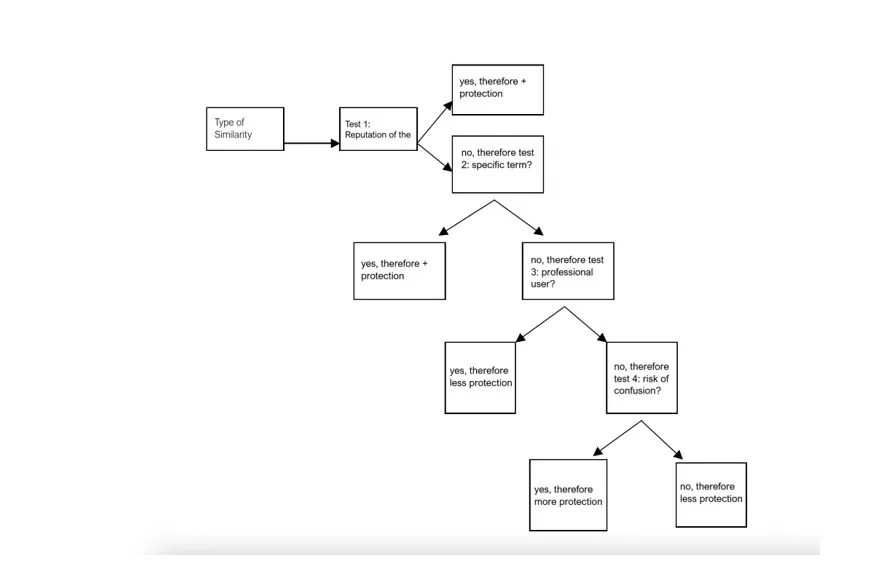
Fig 2. Decision making model for fraudulent use
Source: Authors’ own research.
The provisions of the UDRP procedure have established a presumption of good faith on the part of the domain name registrant. However, even if there is good faith, the panels consider that the mere fact of registering a domain name cannot establish a right or legitimate interest in that same domain name.
The analysis begins by weighing up the arguments put forward by the claimant against the defendant’s evidence to refute these arguments. The general rule is that a minimum of evidence is sufficient.
If the respondent does not refute the claimant’s evidence, the panel will take a strict approach and rule in favour of the claimant if the evidence provided by the claimant is sufficient, or even minimal, to support the claim. If the defendant refutes the claimant’s evidence, the panel will take a much less strict approach. It will apply the same analysis to the subjective and objective elements. As a result, even minimal evidence of circumstances that demonstrate the respondent’s rights or interests in the domain name will be accepted as sufficient to rebut the complainant’s allegations.
However, the second element has not yet been established. The defendant must pass two other tests: the situation presented must not fall within either zone 1 or zone 3, otherwise in principle the defendant can no longer establish the second element.
When analysing bad faith, the panel will look strictly at the circumstances in order to infer whether bad faith exists. The standard for analysing the defendant’s conduct is that of a person presumed to be aware of the rights of trade mark owners and who knows, a priori, that he is not infringing those rights.
The same case may meet the conditions of bad faith and similarity at the same time, to the point of causing confusion. If bad faith is inferred from similarity, zone 5 applies. The standard of analysis applied for the subjective element and the objective element will be less strict than if the situation were located solely in zone 3.
Conversely, if the similarity is inferred from bad faith, zone 4 applies. The standard of analysis applied for the subjective element and the objective element will be stricter than if the situation were located solely in zone 1.
In conclusion, we can identify a diagram, based on the two figures mentioned above, which shows how the panels analyse whether the trademark needs more or less protection, and whether the Internet domain is being abused. It is a suggestion that helps to better understand, from the inside, how the procedure works; it is a possible model of the phenomenon being studied. Further hypotheses could be defined and tested in future research, involving for instance the impact of elements like cultural differences or geographical distance, when assessing bad faith or legitimate interest. Subsequent studies should be carried out in order to take account of subjects and themes that could not be examined in this research.
Conclusion
The research sought to better understand the underlying model by which cases were decided in the UDRP procedure. Generally speaking, the proposed method enabled a closer look to be taken at the way in which panelists interpreted the normative provisions of the procedure and analysed, within a defined framework, the abusive use, or marketing in bad faith, of domain names.
The panels extend or restrict the sphere of application of the elements and subsequent criteria on the basis of certain procedures highlighted in the preceding paragraphs. They also draw conclusions by superimposing the spheres of application of the substantive elements and subsequent criteria, which makes it possible to refine the analysis of concrete cases that are sometimes very difficult to conceptualise from the rather vague terms of the procedure.
The unwritten criteria help in the legal analysis of cases. The panels have developed a flexible classification of these criteria, which evolves over time as new situations arise. By superimposing the various criteria, both written and unwritten, the panelists are able to determine much more clearly, albeit sometimes through over-simplified argumentation, whether or not the conditions of the substantive elements have been met.
Finally, the results made it possible to understand, in a more general way, that the panels are often looking for a just solution, in the ethical or philosophical sense of the term, i.e. they are trying to achieve, beyond the declared role of the procedure – and its well-established reputation – as a tool for repressing abuses, an ideal justice, which takes into account not only the rights of the claimants, but also the interests of the defendants.
References
- Bettinger, T. (2015). Domain Name Law and Practice: An International Handbook (2nd ed.). Oxford University Press USA – OSO.
- Chaisse, J., & Friedmann, D. (2024). LAW OF THE DIGITAL DOMAIN: TRADEMARKS, DOMAIN NAMES, AND THE AI FRONTIER. Franklin Pierce School of Law, 64(2). https://law.unh.edu/blog/2024/03/idea-volume-64-number-2
- Cogburn, D. L., Ochieng, T. A., & Wong, H. M. (2023). Towards an understanding of global ‘private ordering’ in ICANN: Text mining 23 years of Uniform Domain-Name Dispute-Resolution Policy (UDRP) Decisions. Journal of Cyber Policy, 8(2), 186–217. https://doi.org/10.1080/23738871.2023.2286271
- Creswell, J., W. (2009). Research Design Qualitative, Quantitative, and Mixed Methods Approaches (3rd ed.). Sage Publication Inc. https://www.scirp.org/reference/referencespapers?referenceid=1485543
- (2023). UDRP filings surge: Record domain name disputes reported in 2023. Dotkeeper. Available at: https://www.dotkeeper.com [Accessed 7 November 2024].
- Escudero, L. M. (2011). Quality in WIPO Domain Name Arbitration Decisions. HERMES – Journal of Language and Communication in Business, 47, Article 47. https://doi.org/10.7146/hjlcb.v24i47.97568
- Farley, C. H. (2019). Confusing the Similarity of Trademark Law in Domain Name Disputes [52 Akron Law Review 657]. Available at SSRN: https://ssrn.com/abstract=3403744
- (2023). 18% spike in cybersquatting: Domain dispute digest (Q3 2023). GigaLaw. Available at: https://www.giga.law [Accessed 7 November 2024].Yin, R. K. (2018). Case Study Research and Applications (6th ed.). https://uk.sagepub.com/en-gb/eur/case-study-research-and-applications/book250150
- Yin, R. K. (2018). Case Study Research and Applications (6th ed.). https://uk.sagepub.com/en-gb/eur/case-study-research-and-applications/book250150
[i] Wherever texts on the UDRP procedure are cited, we have used the French translation which can be found on the WIPO website, www.wipo.int. (Last visited on 27.10.2024).
[ii] Microsoft Corporation v. Mocosoft o Agregar a Favoritos S.L., WIPO Case No. D2004-0735. 76 Pneumo Abex Corporation dba MAFCO Worldwide Corporation v. Wixon Fontarome, WIPO Case No. D2003-0860.
[iii] March of Dimes Birth Defects Foundation v. Modwalkamerica, WIPO Case No. D2003-0062.
[iv] Segway LLC v. Chris Hoffman, WIPO Case No. D2005-0023.
[v] Lilly ICOS LLC v. Tudor Burden, Burden Marketing, WIPO Case No. D2004-0794.
[vi] DigiPoll Ltd. v. Raj Kumar, WIPO Case No. D2004-0939. The panel cites Studio Peyo S.A., International Merchandising Promotion and Services (I.M.P.S.) v. WWProductions, WIPO Case No. D2004-0768.
[vii] UPIB, Inc. v. Mr. Muhammad Arshad, WIPO Case No. D2004-0428. The panel cites UPIB, Inc. v. Domains Asia Ventures, WIPO Case No. D2004-0020 and AltaVista Company v. Andrew Krotov, WIPO Case No. D2000-1091.
[viii] Valve Corporation v. ValveNET, Inc, ValveNET, Inc, Charles Morrin, WIPO Case No. D20050038. The panel cites as authority an extremely well known case, Telstra Corporation Limited v. Nuclear Marshmallows, WIPO Case No. D2000-0003.
[ix] Allee Willis v. NetHollywood, WIPO Case No. D2004-1030.
[x] The Orange Bowl Committee, Inc. v. Front and Center Tickets, Inc/ Front and Center Entertainment, WIPO Case No. D2004-0947.
[xi] Segway LLC v. Chris Hoffman, WIPO Case No. D2005-0023.
[xii] Mission KwaSizabantu v. Benjamin Rost, WIPO Case No. D2000-0279.
[xiii] The Toronto-Dominion Bank v. Boris Karpachev, WIPO Case No. D2000-1571.
[xiv] In English, ‘recipe’ means culinary recipe.
[xv] Compagnie Generale Des Etablissements Michelin – Michelin & Cie. v. Graeme Foster, WIPO Case No. D2004-0279.
